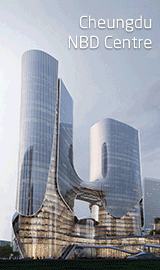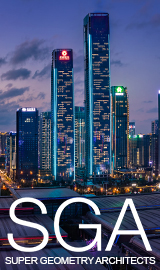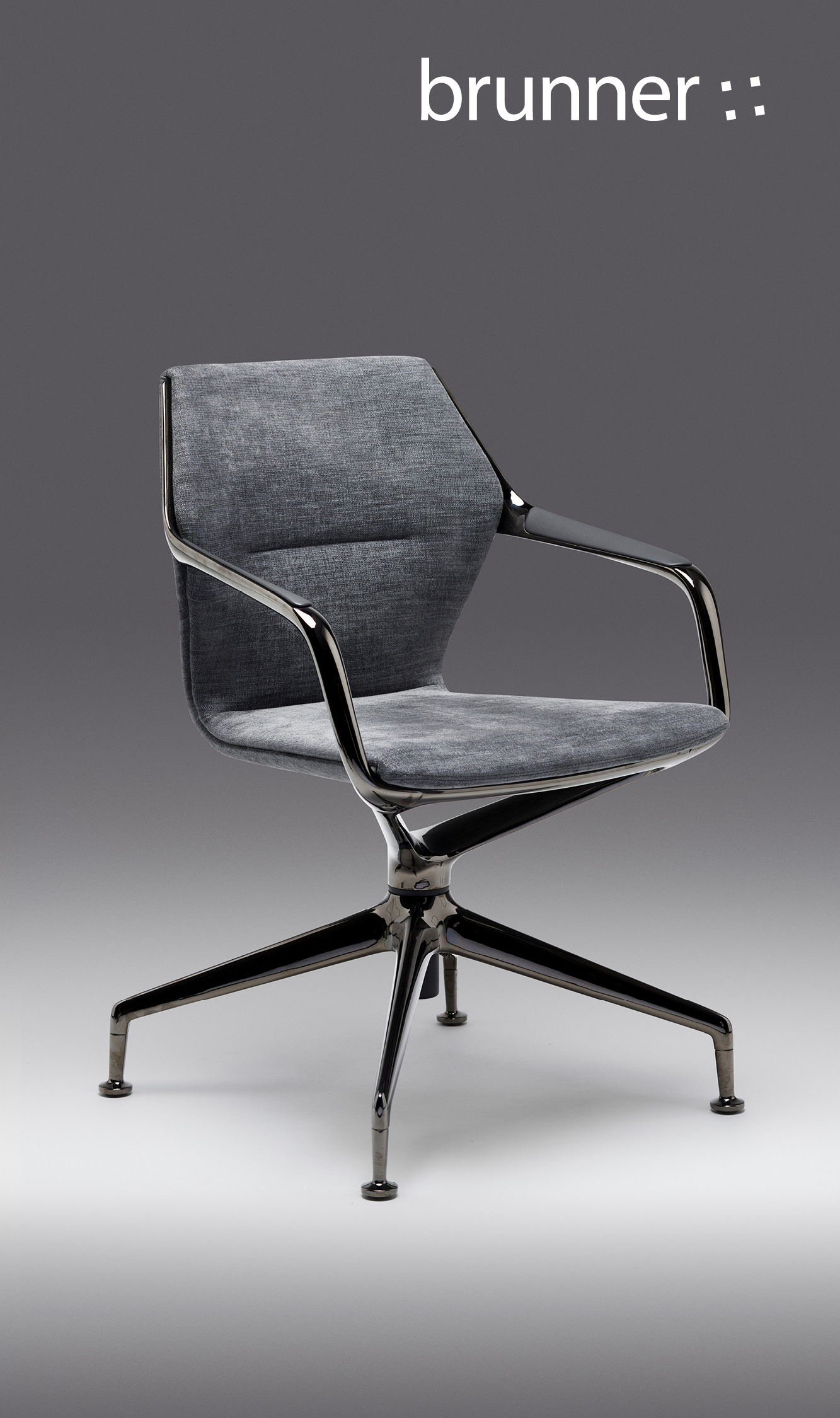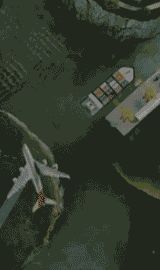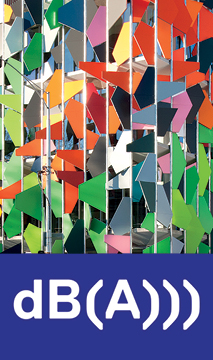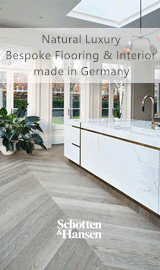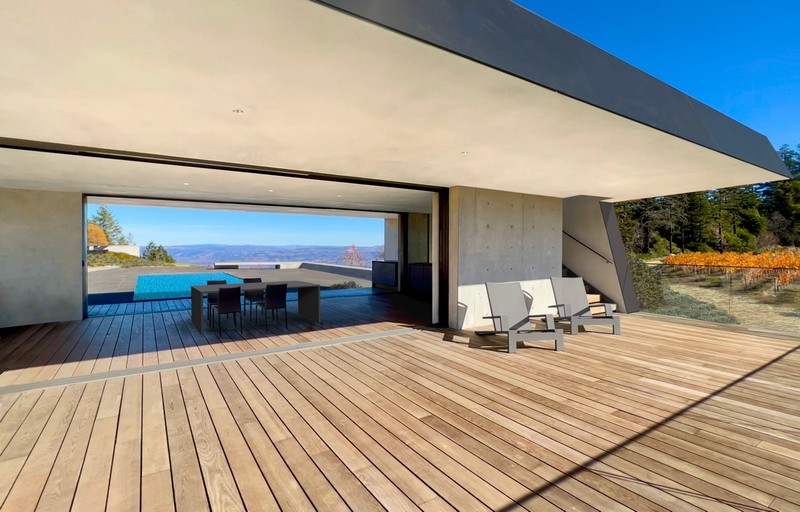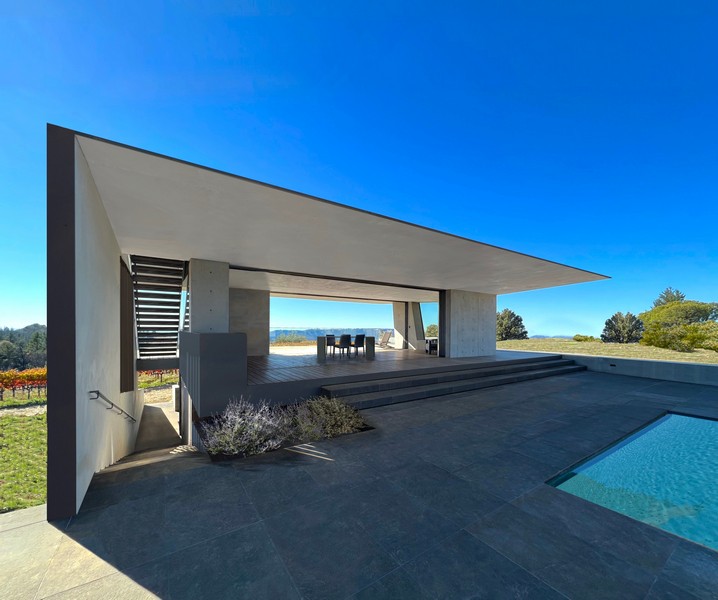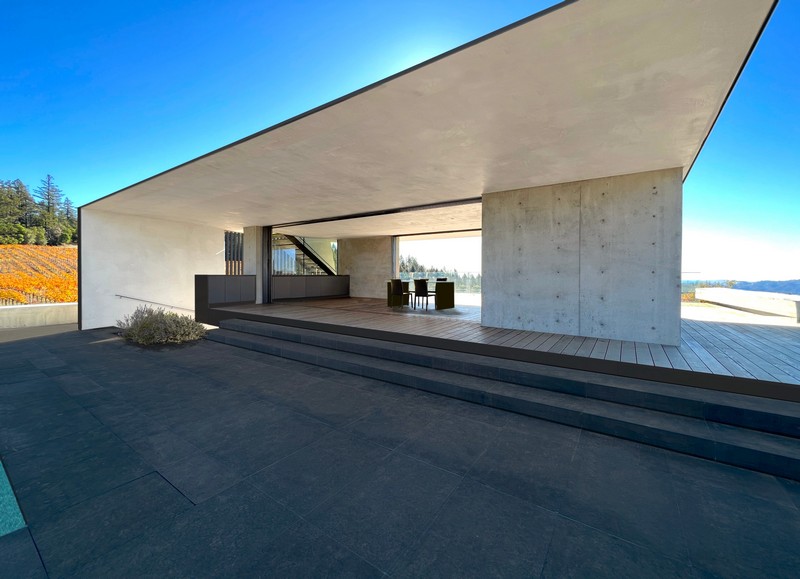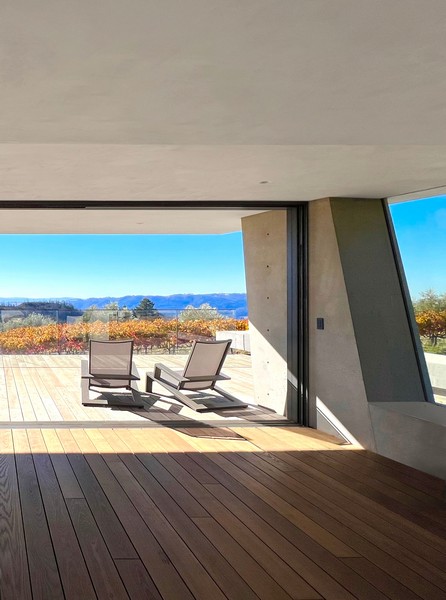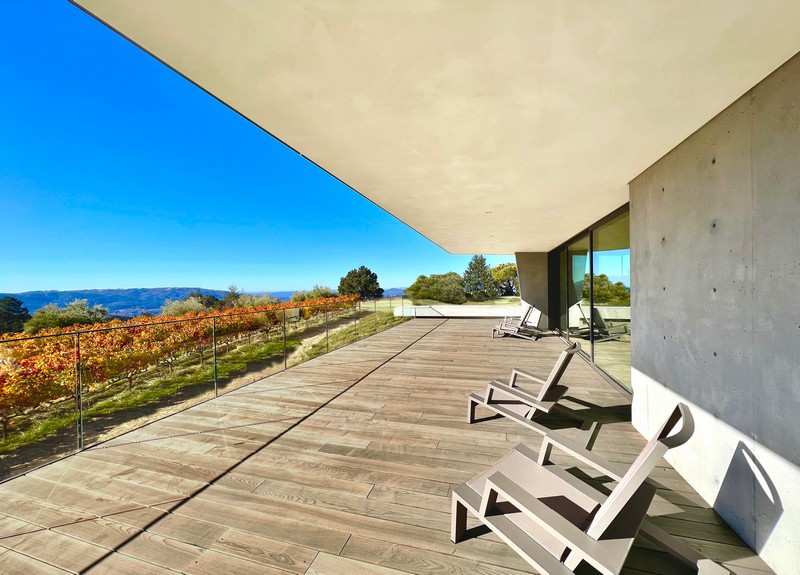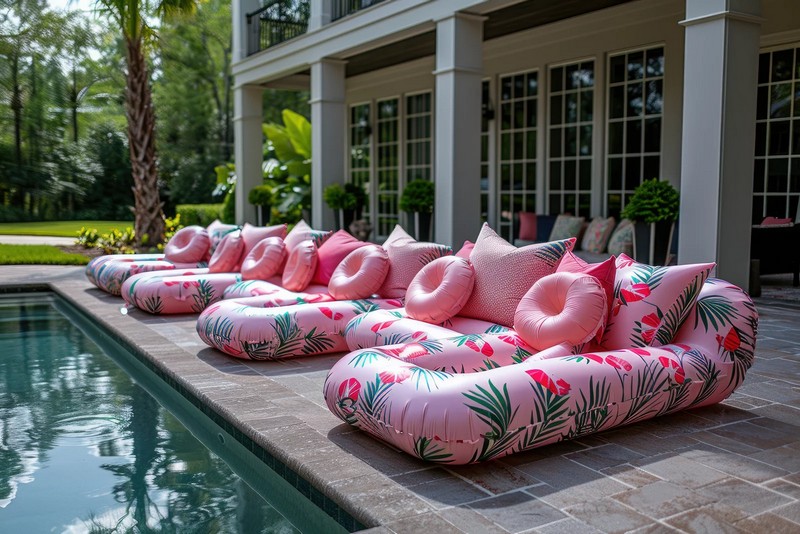Terry & Terry Architecture’s Glen Ellen Pavilion is a study in elemental elegance and purposeful restraint. Designed as both a wine-tasting retreat and a pool house, it sits lightly on the eastern ridge of Glen Ellen, where the land falls away to reveal sweeping views of Sonoma Valley and the distant folds of Napa.
Text: Mike Staley | Photos: Terry & Terry Architecture
The site, once devastated by the Tubbs Fire in 2017, now hosts a quietly confident structure that speaks to resilience, renewal and refined hospitality.
A hospitality haven with a design pedigree
The pavilion extends southward from the main house, anchoring the pool area between the two. Its placement—slightly off the ridge—offers protection from the elements while embracing the slope of the land. Basalt stone pavers define the terraces, while cast-in-place concrete masses at the corners open up the tasting area to light and landscape.
The material palette is tactile and tactical: concrete for permanence, standing seam metal roofs for fire resistance, and deep overhangs for shade and shelter.
Inside, the experience is curated yet casual. A compact kitchen bar supports the wine-tasting function, while the lower level discreetly houses bathrooms, outdoor showers and wine storage. An open side stair leads to a built-in viewing deck, offering a quiet perch above the vineyards. It’s a place designed for pause—where architecture frames the moment, and the moment is always worth lingering in.
The project has earned recognition from the DNA Paris Design Awards and the BLT Built Design Awards, and was selected for the Archello Awards 2025 Longlist for Pavilion of the Year. It’s a testament to Terry & Terry’s ability to merge theory with craft, and to create spaces that feel both grounded and elevated.
This is architecture that invites people in—a pavilion that’s as much about the view as the vibe. And a reminder that hospitality, when done well, is as much about the design as it is about the welcome. In this instance: poolside, with vino.


